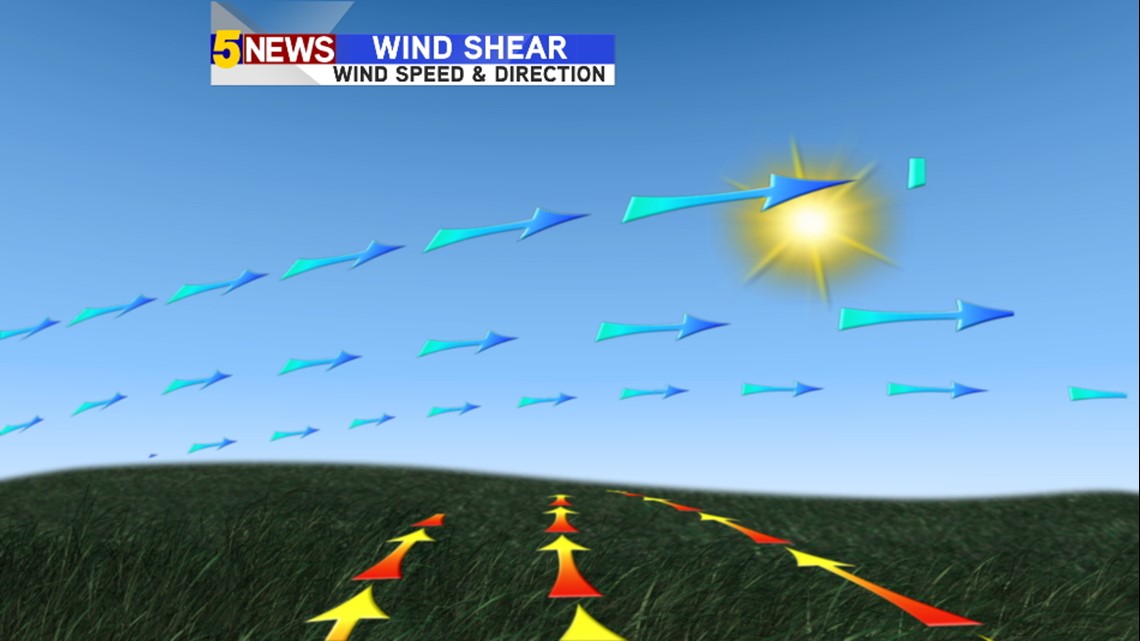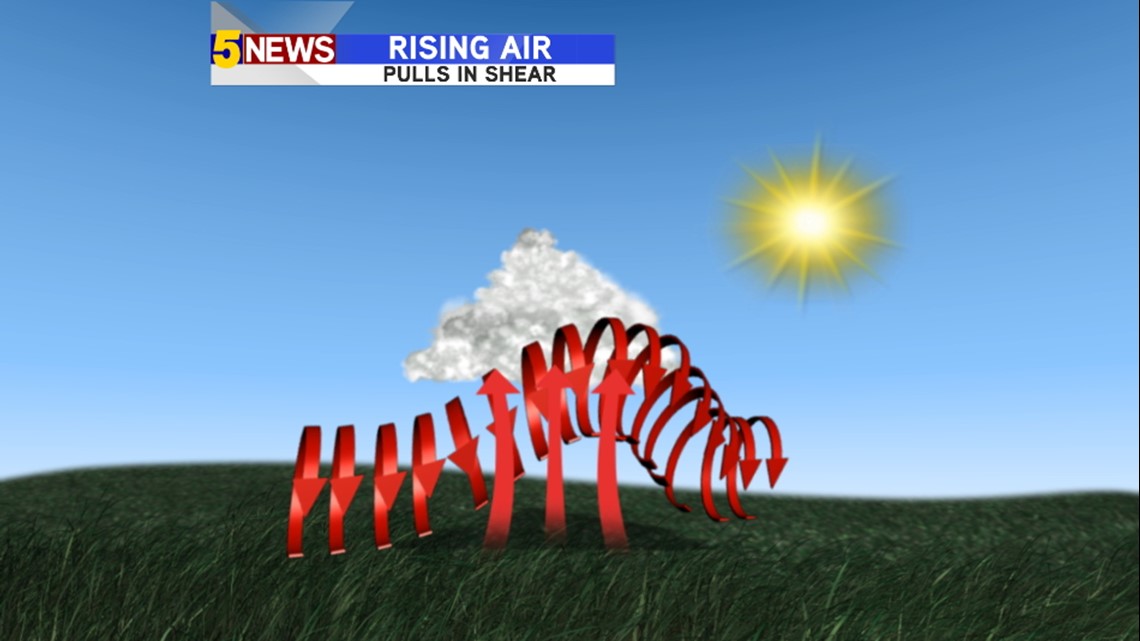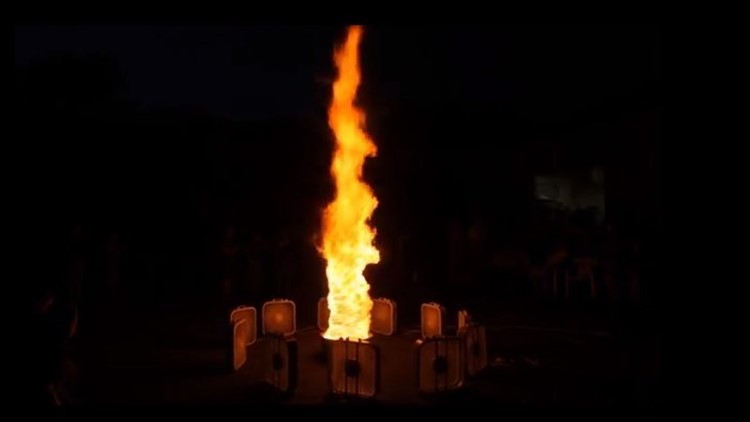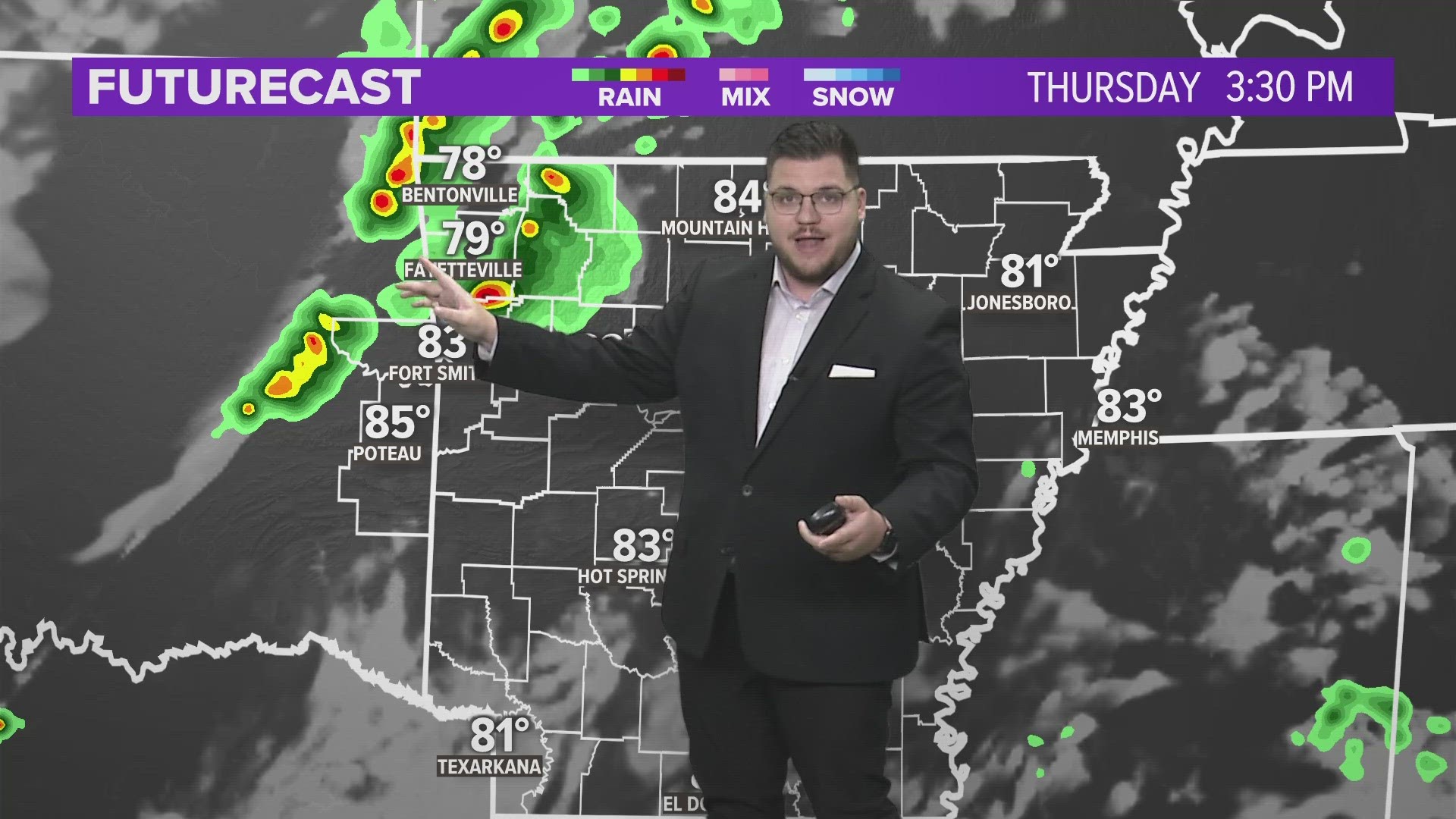When severe weather is in the forecast we often look for 3 variables: Moisture, Instability, & Lift.
But it’s the shear and the instability which ultimately determine the type of severe weather we see and whether or not we see tornadoes.
Too much instability and low shear and the result can be massive hailstones from storms with no tornado risk.
Too little instability and high shear occasionally won’t even develop storms and storms that do develop do not evolve into supercell producing tornadoes but instead a strong line of storms.
The strongest storms tend to occur with both modest shear and instability. Enough wind to turn the air… and enough instability to lift the air.


Shear is evaluated by both direction and speed.
A situation with strong southeast winds at the surface and even stronger west winds aloft will result in a high shear environment favoring the turning of storms.


Instability is the tendency for the air to rise by buoyancy. Instability is maximized when it’s allowed to build up during the day; usually with the formation of a capping inversion.
This video is from a technology based community center in Maryland called Unallocated Space. It’s made the rounds on the internet before and perhaps you have already seen it, but it really illustrates both shear and instability working in tandem.
The students placed box fans around a bonfire. The box fans provided directional and speed shear. The fire provided the instability by heating the air and causing a rising motion. It’s possible an invisible tornado would exist without the fire but the heat likely stretches the vertical column of air which elongates the tube thru the conservation of angular momentum.
I wouldn’t recommending trying this at home, but you can see how the principles of thermodynamics and the dynamic wind profiles work together to create rotation essentially developing a fire tornado.
-Garrett



